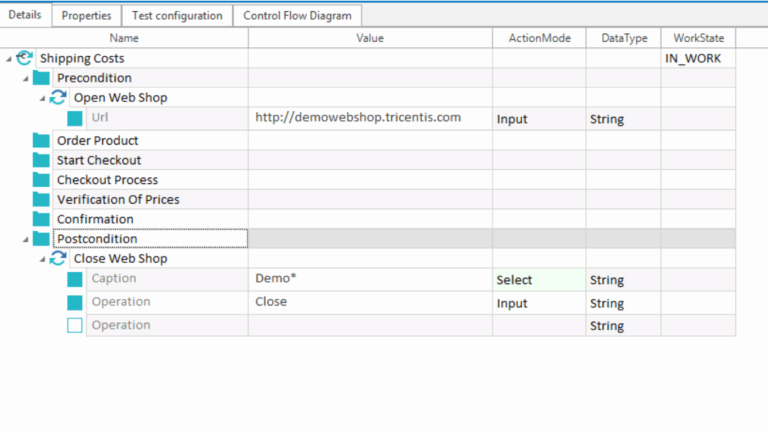Without a question, Selenium 4 is one of the best tools available for automation testing, but due to the complexity of the code, it may be challenging for a non-technical person to comprehend how it works. This process is made easier by the use of Cucumber, which simplifies and clarifies the complex code. But how does it accomplish that? You will find out in this article.
When it comes to automating tests run on web browsers, Selenium is the chosen technology. It only applies to testing web applications. Selenium cannot test any desktop (software) or mobile application.
It makes it easier to write functional test cases. The finest appropriate automation tool for online applications, it also offers dependable performance with a ‘n’ number of test cases. A good Selenium training course will enable you to learn about the integration of Cucumber and Selenium 4.
The majority of businesses employ Selenium for functional testing. These companies who use Selenium want to combine it with Cucumber because it makes it simple to read and comprehend application flows. Let’s continue this essay on cucumber and see why it is used with selenium now that you are familiar with what selenium is.
Introduction to Cucumber
Cucumber is a testing strategy or tool that supports behaviour-driven development (BDD). It offers a technique to write tests that everyone, regardless of technical proficiency level, can comprehend.
The ability to write test scripts from both the developer’s and the customer’s perspectives is provided by behaviour-driven development.BDD serves as a link between the following individuals:
- Software Engineer and Business Analyst.
- Manual Tester and Automation Tester.
- Manual Tester and Developers.
Because Gherkin language is used in the Cucumber BDD framework and is in Plain Text, it helps the client comprehend the application code. One such open-source tool that encourages behaviour-driven development is this one.
It specifies a testing framework that is driven by plain English text, to be more precise. It functions as development support, automated testing, and documentation all rolled into one. Anyone in the company can comprehend how the software behaves. More than a dozen different software platforms, including:
- Ruby on Rails
- Selenium
- PicoContainer
- Spring Framework
- Water
Why Cucumber?
Cucumber is one of the most widely used tools for the following reasons:
- It is free to use because it is open-source.
- You can create your test scripts with Cucumber in a variety of languages, including Java, Ruby,.NET, Python, etc.
- Additionally, it interfaces with web-based testing technologies like Watir, Ruby on Rails, and Selenium.
- The majority of people use Cucumber as a BDD tool today.
Advantages of Cucumber Over Other Tools
- Different languages, including Java.net and Ruby, are supported by Cucumber.
- It serves as a link between technical and business language. By developing a test case in plain English text, we can do this.
- It enables non-programmers to participate and enables the test script to be produced without any prior programming experience.
- Unlike other tools, it fulfils the function of an end-to-end test framework.
- Cucumber offers code reusability due to its straightforward architecture for test scripts.
Why use Cucumber with Selenium?
Selenium is widely used in businesses for functional and regression testing. When it comes to online application automation, Selenium and Cucumber work well together because Cucumber enables you to write your tests quickly in a language that is similar to English and Selenium enables you to run on a variety of browser combinations.
Tests are written in feature files that may be understood by different stakeholders in an agile setting, such as business analysts when utilising Selenium with Cucumber for test automation. JUnit is used to run these scripts and produce the output, and Cucumber also has the ability to support a variety of scripts and programming languages.
Cucumber Selenium WebDriver Integration
Along with Selenium WebDriver, testers can utilise the Cucumber framework to test web-based applications. These test cases are written by testers in straightforward feature files that managers, non-technical stakeholders, and business analysts can easily understand. incorporate those steps from the feature file in the step definition file. You must add dependencies for Cucumber and WebDriver if you’re using Maven.
The supplied statement initialises the browser and navigates to the page for a supplied Selenium Cucumber integration test case.
Statement enters “user A” as the username and “password” as the password when logging into the application. Both the ‘username’ and ‘password’ entries come from the feature file, and both are used in the same sequence.
The conditions are only verified by Then Statement once the user has logged into the program. Depending on the needs of your project, you can construct a multilayer architecture.
Conclusion
That concludes our discussion of the integration of cucumber and selenium. I’ve covered most Cucumber principles in this blog post on Cucumber Selenium Java Integration, including Cucumber features and how to use them with WebDriver.As a result, classic frameworks like Keyword Driven and Hybrid Framework are designed with less difficult code. Since Behaviour Driven Development is an Agile Software practice, it is used in the majority of projects where the agile methodology is implemented. Check out a good Selenium certification course to learn more about Cucumber.





























